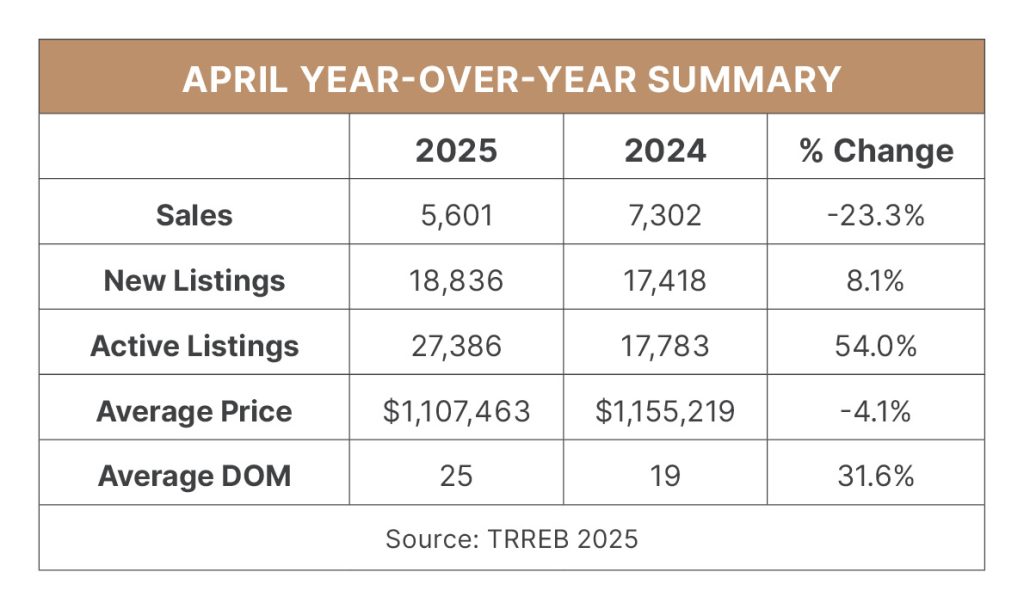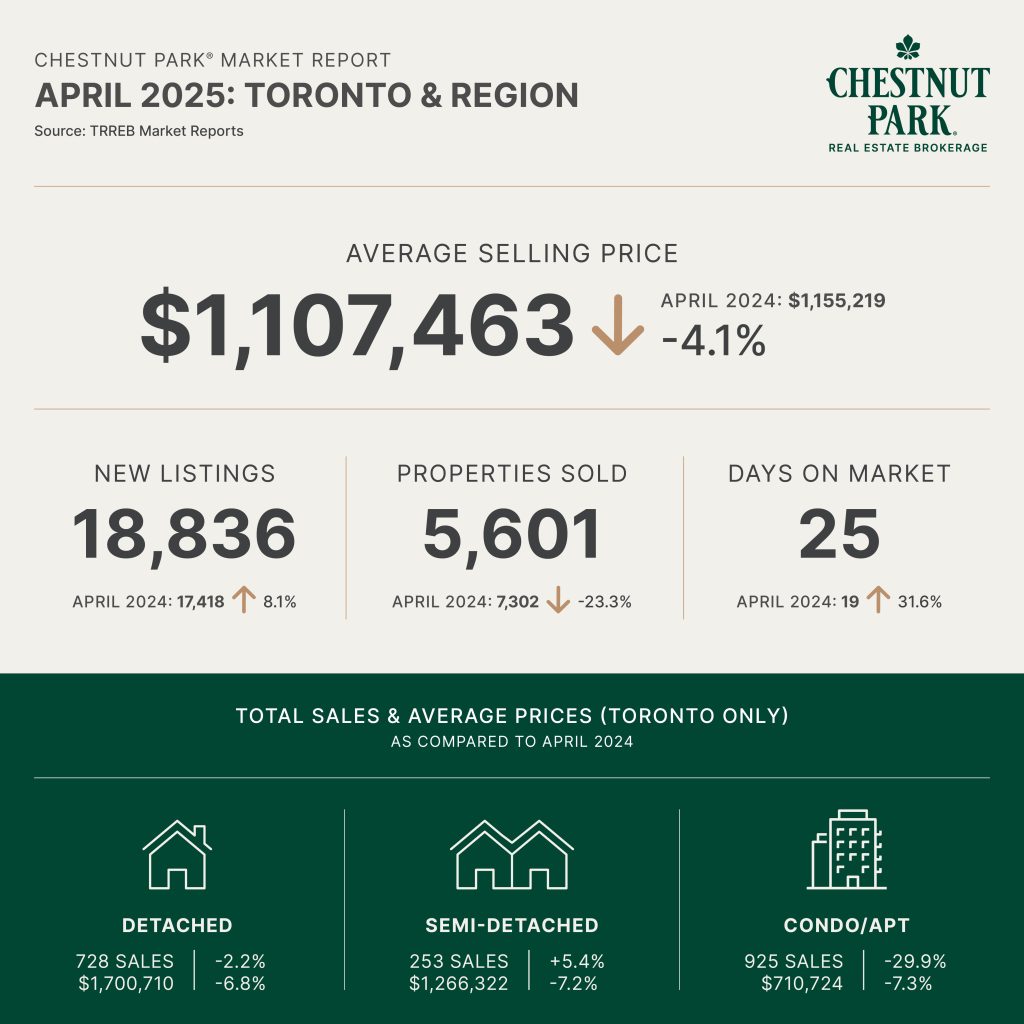The foundation of a robust residential resale market is certainty, which in turn is usually associated with economic stability. Unfortunately, the Toronto and Region residential real estate market is in one of the most chaotic, turbulent, economic situations since the equity market meltdown in 2008. This uncertainty was reflected in the Bank of Canada’s decision to hold its overnight rate at 2.75 percent during its meeting in April.
A bank rate reduction would have been welcomed by consumers. As this report will indicate, average sale prices for most property types in the Region, particularly the City of Toronto, remain lofty. A rate cut would have helped with affordability. Mortgage interest rates continue to be elevated – 5 year fixed rates remain over 4 percent. The weak economic numbers, an early response to the tariffs proposed (and in some cases implemented) by the Trump administration, persuaded the Bank of Canada to hold its rate.
There is no doubt that the overall numbers for the April resale market are moribund. Yet within these gloomy numbers are some bright spots that speak to the strength of the Toronto and Region real estate market.

In the March Market Report, it was pointed out that the marketplace was trifurcated between the City of Toronto, the 905 Region, and the condominium apartment marketplace. That trifurcation continues into April.
Condominium apartment sales are the worst performing sector in the Toronto and Region marketplace. In April on a year-over-year basis sales declined by 29.9 percent in the City of Toronto and 31.5 percent in the 905 Region. Prices also declined by 7.3 percent and 6.1 percent, respectively.
The condominium apartment market accounts for 36 percent of all active listings, but interestingly only accounted for 25 percent of all sales. In addition, the average sale price of all condominium apartments reported sold was only $678,048, and $710,724 in the City of Toronto. Clearly factoring condominium apartment sales numbers severely distort the overall numbers, particularly average sale price.
This is nowhere more apparent than in a review of the market performance of detached and semi-detached properties, particularly in the City of Toronto.
All detached properties – on average – in the City of Toronto, sold in only 19 days, at 100 percent of their asking price, and at an average sale price of $1,700,710. The numbers in the 905 Region were not as robust. Detached properties sold in 20 days, at 99 percent of their asking price and at an average sale price of $1,324,280. This divergence has been at play since the beginning of the year.
Although semi-detached property sales in the 905 Region performed strongly compared to detached property sales, they could not keep pace with semi-detached property sales in the City of Toronto. In the City of Toronto all semi- detached properties sold in only 14 days, at 107 percent of their asking price, with the average sale price coming in at $1,266,322. In the 905 Region semi-detached properties sold in 16 days, at 104 percent of their asking price, and at an average sale price of $944,934, almost 35 percent less than semi-detached property sales in the City of Toronto.
The trifurcation continues.

- The Move-Up Buyer’s Year-End Checklist: Setting Up for 2026 Success
- OCTOBER 2025: REAL ESTATE MARKET REPORT
- Preparing Your Starter Home for Maximum Sale Value: A Move-Up Seller’s Guide
- Avoiding the Move-Up Trap: Common Mistakes That Cost Toronto Families Thousands
- SEPTEMBER 2025: REAL ESTATE MARKET REPORT

